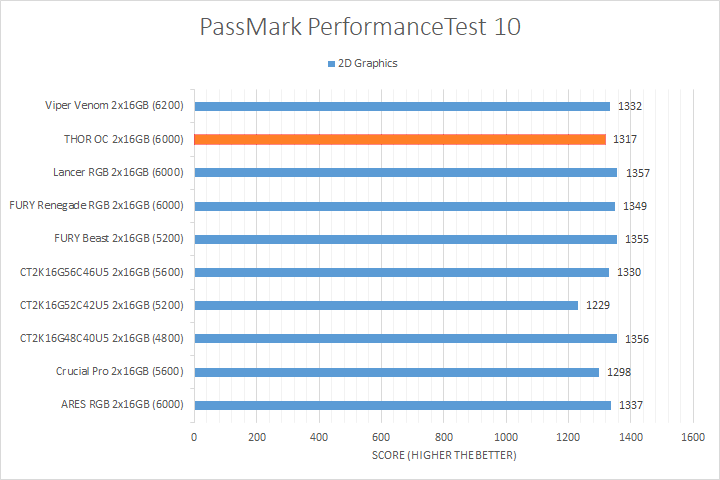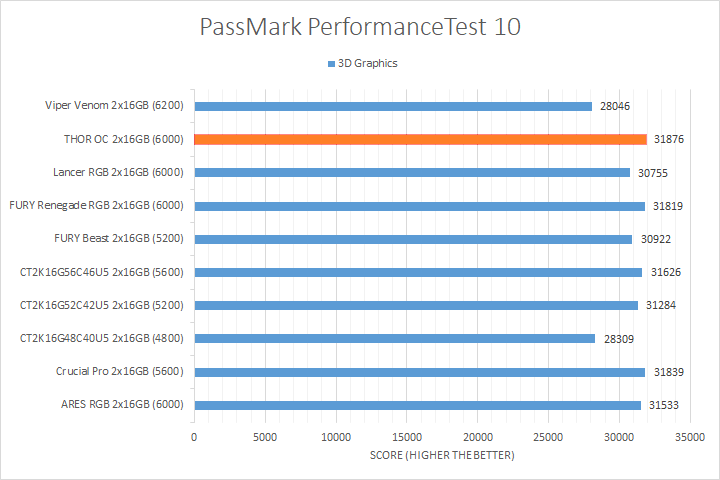Page 8 - Benchmark: PassMark PerformanceTest 10
About PassMark PerformanceTest 10
Fast, easy to use, PC speed testing and benchmarking. PassMark PerformanceTest allows you to objectively benchmark a PC using a variety of different speed tests and compare the results to other computers.
- Find out if your PC is performing at its best.
- Compare the performance of your machine to similar machines.
- Measure the effect of configuration changes and upgrades.
- Avoid paying big bucks for poor performance.
- Make objective independent measurements on which to base your purchasing decision.
- Use the advanced tests to create you own benchmark scenarios
From: Developer's Page




PassMark PerformanceTest 10 is used to evaluate four different areas of our system: CPU, RAM, 2D Graphics, and 3D Graphics. It takes a different approach in obtaining results compared to other programs, which is why we like to use it, haha. PassMark Performance Test 10's memory benchmarking tool is the only test in our setup that takes memory capacity into account, but it does not seem to account for anything above 16GB from our past experience. Also, all our kits assessed are 32GB in total capacity, which makes this point moot. The memory benchmarks did account for the differences in data transfer rates. The result from the Lexar THOR OC lined up with all of the other tests we had seen so far, as it only performed better than the XPG Lancer RGB in its speed class. It was competitive and in the middle for the CPU tests, while also being slightly slower in the 2D Graphics test. On the other hand, it put up the best numbers in the 3D Graphics test. However, we have not seen a strong correlation between the tested memory and the 3D Graphics test in the past either.
Page Index
1. Introduction, Packaging, Specifications
2. A Closer Look, Test System
3. Benchmark: AIDA64 CPU
4. Benchmark: AIDA64 FPU
5. Benchmark: AIDA64 Memory
6. Benchmark: PCMark 10
7. Benchmark: 3DMark
8. Benchmark: PassMark PerformanceTest 10
9. Benchmark: SuperPI 1M, Cinebench 2024
10. Overclocking and Conclusion





